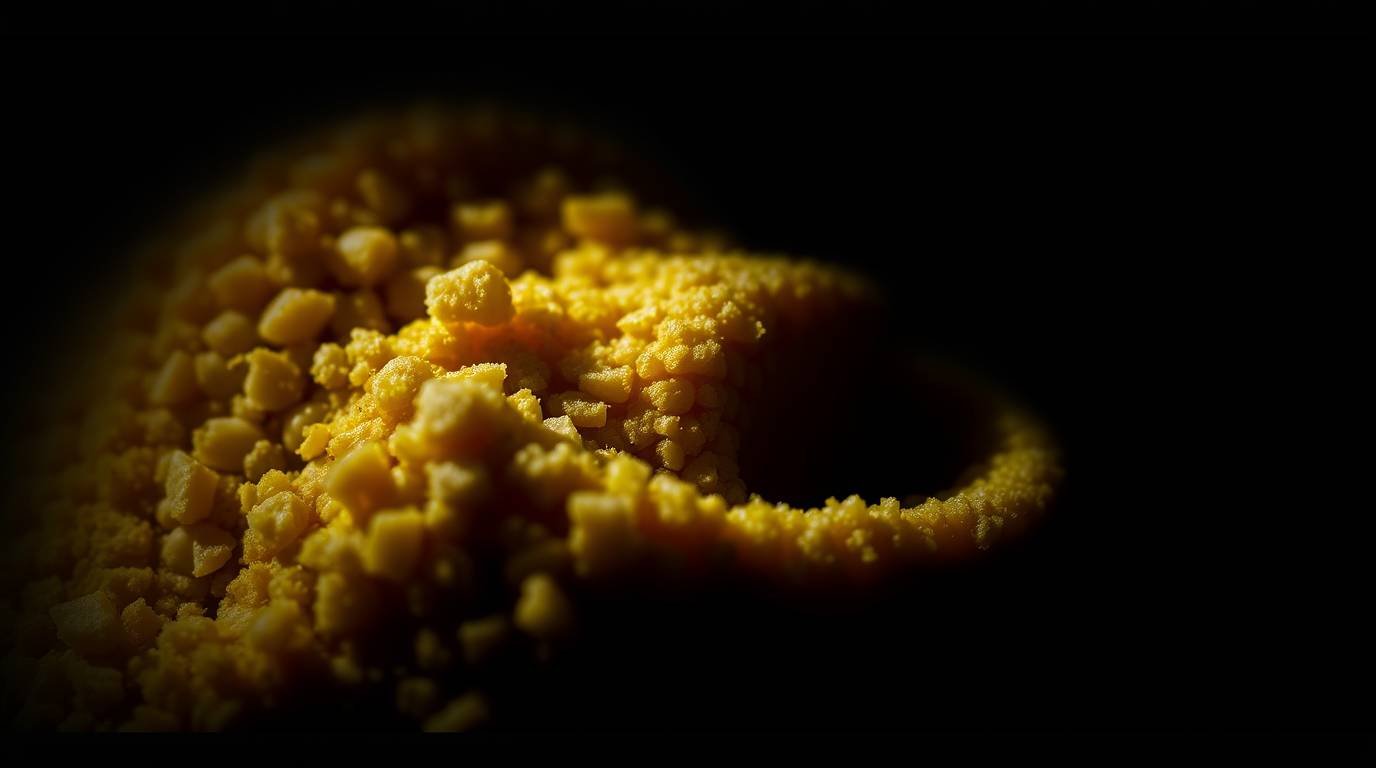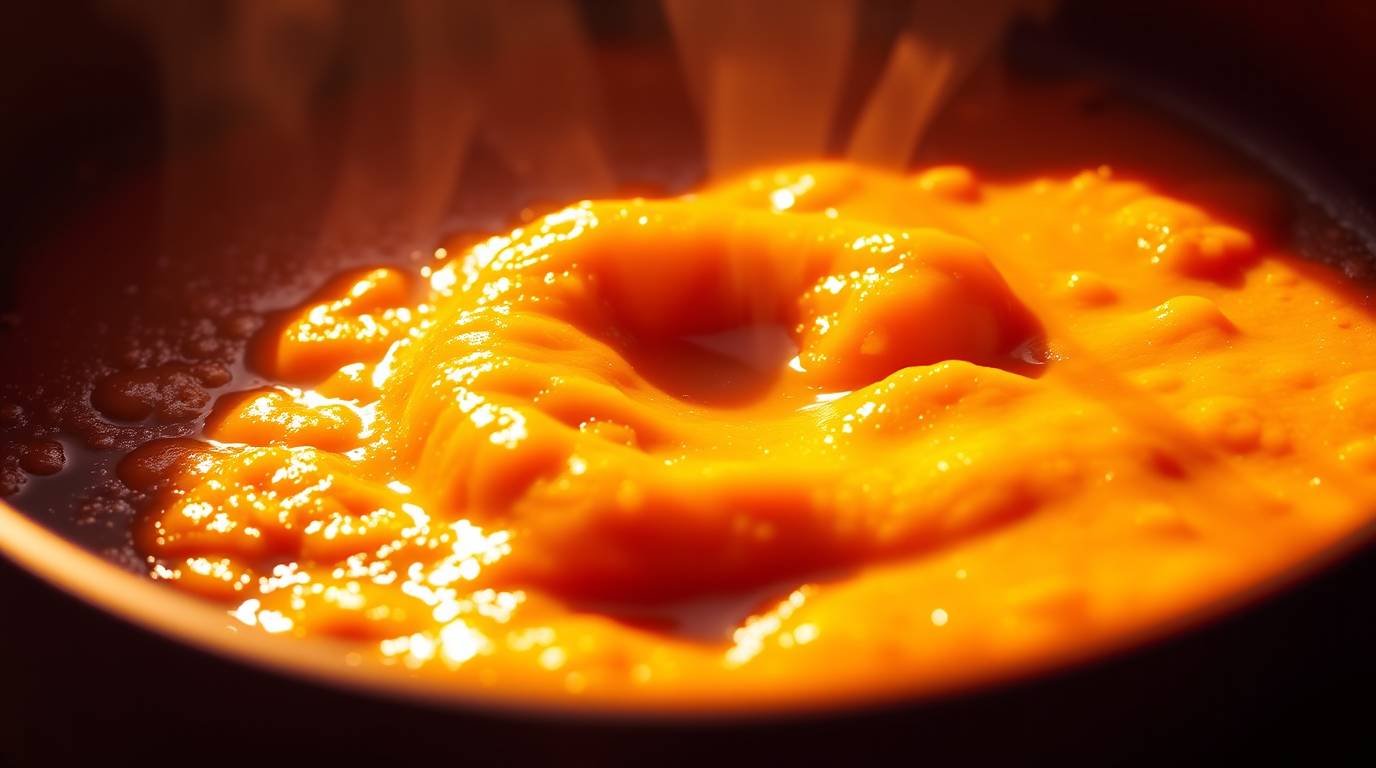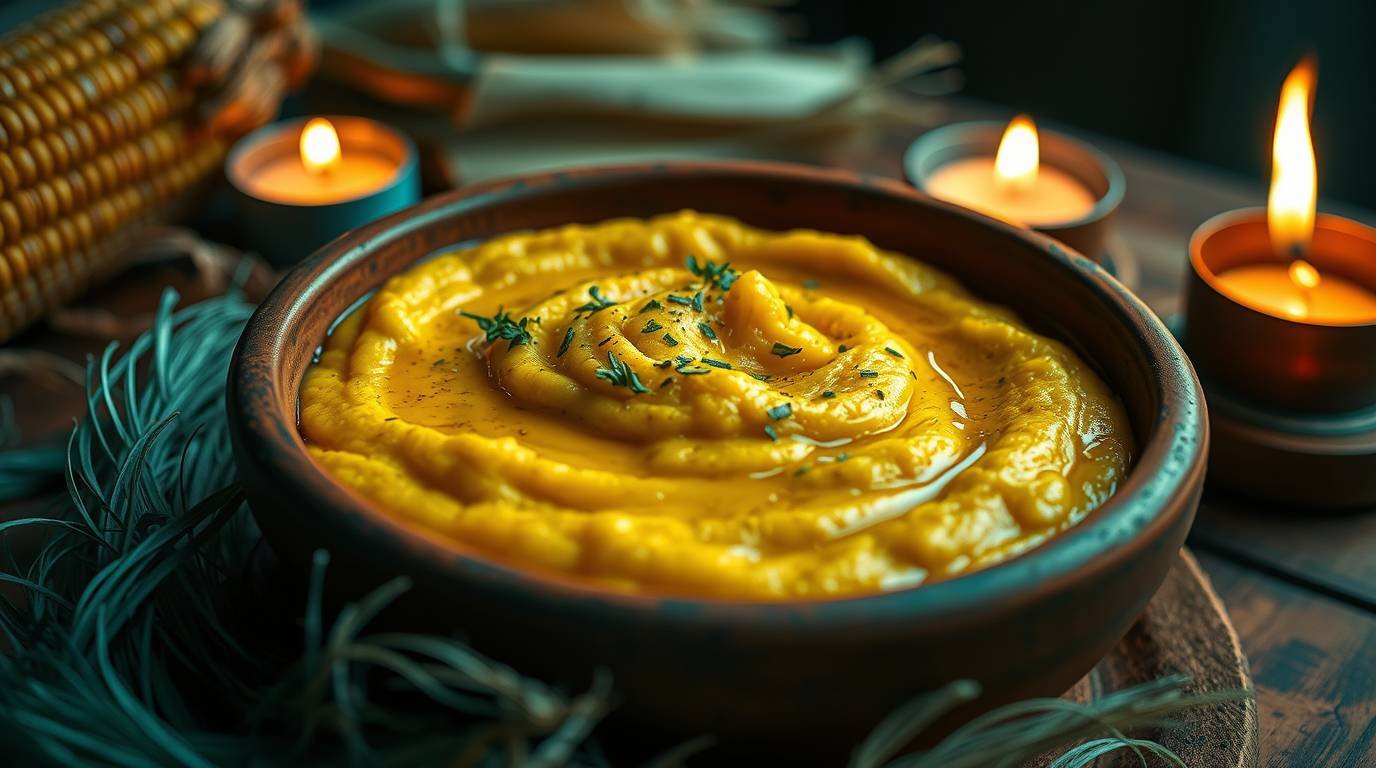Blessing: “Abundantia venit cum unoquoque morsu.”
(“Abundance comes with every bite.”)
Sweet corn polenta, lovingly known as Cibus Fortunae, is a dish that embodies the warmth of home cooking and the joy of sharing abundant flavors with loved ones. Imagine a creamy, golden base, rich with the sweet essence of corn, served alongside vibrant vegetables or drizzled with a luscious sauce. This humble yet exquisite dish not only tantalizes the taste buds but also carries with it the promise of prosperity and good fortune, making it a cherished staple in gatherings and celebrations.
Marco’s Notes
"When I first stirred the golden cornmeal into a pot of simmering broth, I felt like I was conjuring sunlight itself. Polenta has that effect — humble ingredients transformed by slow care into something comforting and rich. I’ve always thought of this dish as an offering to Fortuna, the fickle goddess of luck: steadying her with warmth, flavor, and gratitude. Eat this when you need to ground yourself and draw blessings — a bowl of simple, golden power, radiating abundance from the inside out."
Tarot Insights
-
The Empress – Richness, fertility, nurturing — this card infuses the dish with the energy of growth and plenty.
-
The Wheel of Fortune – Fortuna herself spinning her wheel — polenta as a ritual to turn cycles toward your favor.
-
Ace of Pentacles – A tangible gift of abundance; a reminder that prosperity begins with simple, grounded actions (and meals).
Chakra & Magick Insights
-
Root Chakra (Muladhara): Corn — an earthy, ancestral grain — stabilizes and nourishes your foundation, promoting security.
-
Solar Plexus Chakra (Manipura): The golden color of polenta fuels personal power and confidence — a “you can do this” meal.
-
Magickal Use: Stir clockwise while repeating a haiku invocation:
"Golden grains unfold,
Fortune spins a kindly wheel,
I feast on my luck."
Eat slowly, visualizing each spoonful filling you with grounded confidence and opportunity.
Origins and Cultural Significance
Polenta has roots deeply embedded in Italian cuisine, tracing back to ancient times when it was a staple for the peasants. Originally made from chestnut flour or farro, it evolved over centuries into the cornmeal dish we know today, particularly after corn was introduced to Europe from the Americas in the 16th century. It became a beloved comfort food, enjoyed by families across various regions, each adding their unique twist to the recipe. In Italy, especially in the northern regions, polenta is more than just food; it represents a culture of togetherness and resilience, often served during communal feasts or family gatherings.
Sweet corn polenta, in particular, transforms this traditional dish into something that celebrates the bountiful harvest. Corn, associated with abundance and fertility in various cultures, makes this dish not just a meal, but also a symbol of good fortune. When prepared with care and shared with friends and family, it holds the power to create lasting memories, much like the stories shared around the dinner table.
Unique Ingredients and Flavors
At the heart of Cibus Fortunae is sweet corn, a vibrant ingredient that brings a natural sweetness and a delightful texture to the dish. The choice of cornmeal is crucial; it’s essential to select high-quality, stone-ground cornmeal for the best flavor and creaminess. The coarse grind of the cornmeal creates a delightful contrast to the smooth, silky polenta, offering a satisfying bite.
Complementing the corn is a medley of ingredients that enhance its natural flavor. For instance, incorporating high-quality vegetable or chicken broth instead of water adds depth and richness. A touch of butter and freshly grated Parmesan cheese elevates the creaminess to new heights, providing that luxurious mouthfeel that makes you want to savor every spoonful. For those seeking a hint of freshness, a sprinkle of herbs like thyme or basil can beautifully balance the dish’s sweetness, creating a delightful harmony on the palate.
Cooking techniques also play a significant role in achieving the perfect polenta. The slow-cooking method is key here, allowing the cornmeal to absorb the liquid gradually and release its starches, which results in that creamy, dreamy texture. Stirring consistently while the polenta cooks not only prevents clumping but also serves as a moment for mindfulness in the kitchen—each stir a reminder of the love and care that goes into crafting a homemade dish.
Personal Connection and Modern Interpretations
For me, Cibus Fortunae is more than just a recipe; it’s a connection to my childhood. I remember standing beside my grandmother as she stirred the polenta, her hands expertly guiding the wooden spoon, teaching me that patience is a virtue in cooking. The warm aroma filling the kitchen during those moments created a sense of comfort that I carry with me to this day.
In modern culinary practices, this dish has been embraced with open arms, allowing for countless interpretations. From serving it as a base for grilled vegetables and meats to transforming it into a decadent dessert by adding cocoa or vanilla, the possibilities are endless. Each variation tells a story, from the kitchen to the table, inviting everyone to explore their creativity while honoring the traditional roots of polenta.
Cibus Fortunae, with its rich history, unique ingredients, and personal significance, is more than just a dish—it's a celebration of abundance, love, and the joy of cooking. Whether preparing it for a special occasion or a simple family dinner, this sweet corn polenta is sure to bring warmth and happiness to your table, inviting everyone to indulge in its delightful embrace.








